#edgar negret
Text








Mexico City (20.3.23)
📸 Edgar Negrete Lira
51 notes
·
View notes
Note
What about your sculptures?
ehm,, just the past few years i became interested in learning more about sculpting/sculptures in a conceptual level, i used to love playing with that cold porcelain to make dinosaur figures as a kid. Feliza Bursztyn, Fernando Villamizar, Edgar Negret, Leobardo Perez (to name a few) are some national artists that have inspired me to learn more and i’m just carving wood and using clay atm to explore figure, shapes, shadows..
2 notes
·
View notes
Text
Disrupt Project Week 3-
27/10/23
Artist Research:
Edgar Negret
(Colombian, 1920–2012)
Edgar Negret is a Geometric abstraction sculptor who works primarily with metal. The artist is known for his industrial sculptures that represent nature. Like many other South American Constructivist artists, he was influenced by the Modern Art movements happening in Europe and the United States. Negret believes mechanical forms free of function become magical. The artist’s recent works have involved themes of pre-Columbian symbolism, which is paralleled with the late 20th-century rise of Colombian pride in its indigenous cultures.
Most of his sculptures are remixed versions of traffic lights. He calls them “magical machines”, “masks,” or here, a “kachina.”
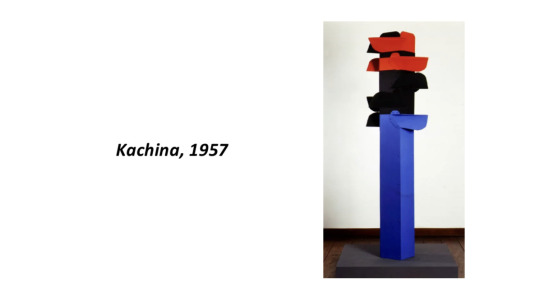

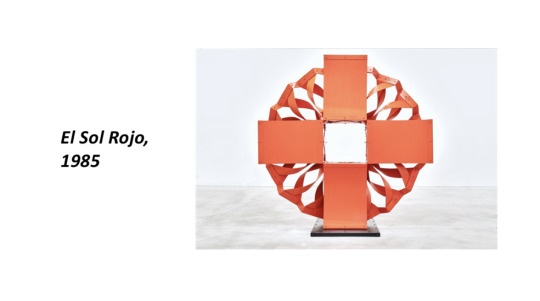
His deconstruction of the concrete reality of things and changing them to fit his perception intrigues me greatly and I hope to take inspiration from him when working with 3D sculptures in the near future.
3 notes
·
View notes
Text
Mi Año en Lecturas (Terminadas y Recomendadas) [En Orden Alfabético]
Adiós a Todo Eso – Ernest Hemingway (Novela)
Agripina: Primera Emperatriz de Roma – Emma Southon (Investigación Histórica)
Alejandro Magno y las Águilas de Roma – Javier Negrete (Novela Ficción Histórica)
Aquitania – Eva García Sáenz de Ururti (Novela Ficción Histórica)
Biografía de la Inhumanidad –José Antonio Marina (Investigación)
Breve Historia del Mundo – Ernst H. Gombrich (Historia)
Breves Respuestas a las Grandes Preguntas – Stephen Hawking (Divulgación)
Caos: El Poder de los Idiotas – Juan Luis Cebrián (Investigación)
Clicks Contra la Humanidad: Libertad y Resistencia en la Era de la Distracción Tecnológica – James Williams (Investigación)
Desmorir: Una Reflexión sobre la Enfermedad en un Mundo Capitalista – Anne Boyer (Investigación)
Dignos de Ser Humanos – Rutger Bregman (Investigación)
El Cura Hidalgo y sus Amigos – Paco Ignacio Taibo II (Investigación Histórica)
El Extraño Caso de Benjamín Button – F. Scott Fitzgerald (Cuento)
El Hombre Ilustrado – Ray Bradbury (Cuentos)
El Llano en Llamas – Juan Rulfo (Novela Costumbrista)
El País de los Ciegos – H. G. Wells (Cuento)
El Poder de las Historias: O Cómo han Cautivado al Ser Humano, desde La Ilíada hasta Harry Potter – Martin Puchner (Investigación)
El Precio era Alto – F. Scott Fitzgerald (Cuentos)
Expiación – Ian McEwan (Novela)
Fahrenheit 451– Ray Bradbury (Novela)
Filosofía a Martillazos – Darío Sztajnszrajber (Filosofía)
Guía del Autoestopista Galáctico – Douglas Adams (Novela)
Humanos: Una Historia de Cómo la Hemos Pifiado – Tom Phillips (Investigación Histórica)
Identidad: La Demanda de Dignidad y Las Políticas de Resentimiento – Francis Fukuyama (Investigación)
La Invasión de América – Antonio Espino (Historia)
La Noche en que Frankenstein Leyó El Quijote – Santiago Posteguillo (Divulgación)
La Odisea – Homero (Epopeya)
La Ridícula Idea de No Volver a Verte – Rosa Montero (Memoirs/Investigación)
La Ruta Prohibida y Otros Enigmas de la Historia – Javier Sierra (Investigación)
Las Caras Ocultas de Hernán Cortés – Alejandro Rosas (Investigación Histórica)
Las Epidemias Políticas – Peter Sloterdijk (Investigación)
Locos por los Clásicos: Todo lo que Debes Saber sobre los Autores Griegos y Latinos – Emilio del Río (Divulgación)
Meditaciones – Marco Aurelio Antonino (Filosofía)
México Bizarro – Alejandro Rosas & Julio Patán (Relatos)
Mundo Orwell: Manual de Supervivencia para un Mundo Hiperconectado – Ángel Gómez de Ágrieda (Investigación)
París era una Fiesta – Ernest Hemingway (Memoirs)
Pequeño Elogio de la Fuga del Mundo – Rémy Oudghiri (Relatos)
Reflexiones – Aristóteles (Filosofía)
Sobre el Anarquismo – Noam Chomsky (Filosofía)
SPQR: Una Historia de la Antigua Roma – Mary Beard (Investigación Histórica)
Suave es La Noche – F. Scott Fitzgerald (Novela)
Un Mundo Feliz – Aldous Huxley (Novela)
Un Paraíso en el Infierno – Rebecca Solnit (Investigación)
Un Verdor Terrible – Benjamín Labatut (Relatos)
Una Historia Diferente del Mundo – Fernando Trías de Bes (Investigación)
Una Princesa de Marte – Edgar Rice Burroughs (Novela)
4 notes
·
View notes
Photo

- Hola. - De dónde eres? *Soy de Colombia. - Aahh Pablo Escobar, marihuana, cocaína! .. * Disculpe, usted es adicto, verdad? - Yo, no!!... por qué? * Porque si usted fuera culto, me habría preguntado sobre el mejor café del mundo, las mejores Esmeraldas, las flores más variadas y la biodiversidad, nuestras mujeres, las mujeres más bellas del mundo... y la más jovial y amigable La gente del planeta. * Si fueras un atleta, me habría identificado con Falcao García, James Rodríguez, Nairo Quintana, Mariana Pajón o Catherine Ibargüen... * Y si fueras un artista, me habría conectado con Fernando Botero, Doris Salcedo, Edgar Negret... o con cantantes como Juanes, Shakira, Carlos vives, o con totó la momposina, y con salsa, joropo, cumbia y Muchos. * Si usted lee un poco, me habría identificado con nuestro premio Nobel de literatura Gabriel García Márquez. * y si usted tuviera un buen paladar usted habría preguntado sobre el ajiaco, la bandeja paisa, el tamal,la lechona, la arepa e ' huevo, la mota de ñame, las arepas, o la empanada, cuy con papas y Ají, nacional. * Sin embargo, veo que sólo conoces al proveedor de tu adicción.... Sólo quiero mostrarle que somos más de 48 millones de colombianos honestos que incluso si no nos conocen, nos van a gustar mucho más e incluso quieren visitarnos. -------- Una campaña contra el modo de describir a Colombia 🇨🇴 en todo el mundo. 💛💛💙❤️ https://www.instagram.com/p/CkVo2nYOv3a/?igshid=NGJjMDIxMWI=
0 notes
Text
Escuelas de charrería: el arte de dominar el lazo crece en México
Escuelas de charrería: el arte de dominar el lazo crece en México
La Escuela Municipal de Charrería de Tlajomulco, en Jalisco, fue fundada en 2016, año en que la UNESCO declaró esta práctica como patrimonio inmaterial de la humanidad.
Por Sergio Blanco/AFP
7 septiembre, 2022
Propiedad de ganaderos y otros empresarios, los equipos se conforman con ocho o más integrantes que participan en competencias o exhibiciones. (Foto; Edgar Negrete/Cuartoscuro)
Víctor…
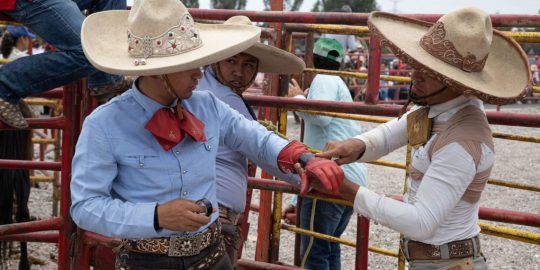
View On WordPress
#Campeonato Nacional Charro#Charrería#Escuela#Escuela de Charrería#Federación Mexicana de Charrería#Lienzo Charro
0 notes
Text
Medellín: subastarán obras de arte para pagar matrícula de estudiantes - Educación - Vida
Medellín: subastarán obras de arte para pagar matrícula de estudiantes – Educación – Vida
“Comparte arte, comparte educación” es el eslogan de la segunda Subasta Solidaria de Arte, una iniciativa que nace del Fondo de Solidaridad CES (FSC). En esta edición, se cuenta nuevamente con la Galería AH Fine Art como aliado. La subasta tendrá 102 obras de artistas nacionales e internacionales como Francisco Antonio Cano, Nadín Ospina, Hugo Zapata, Alejandro Narváez, Edgar Negret, Omar Rayo,…

View On WordPress
0 notes
Photo
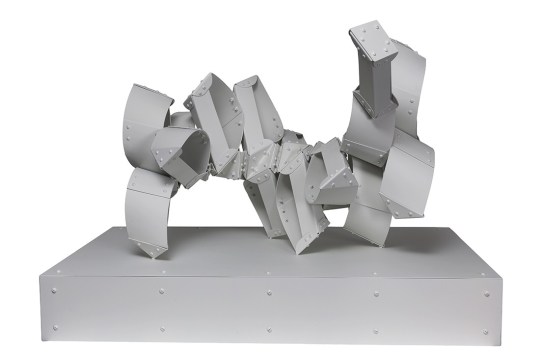
Edgar Negret [Colombia] (1920-2012) ~
'Stairs', 1971.
Painted aluminium (77 x 11 x 82 cm).
#art#contemporary art#art hunt streak week#edgar negret#sculpture#hard edge#abstract art#minimal art#conceptual art
38 notes
·
View notes
Photo

Edgar Negret (1920-2012)
MASK (APARATO MAGICO NO. 2) 1957
Gouache on wood and metal
Private Collection, London / Sotheby’s
14 notes
·
View notes
Photo
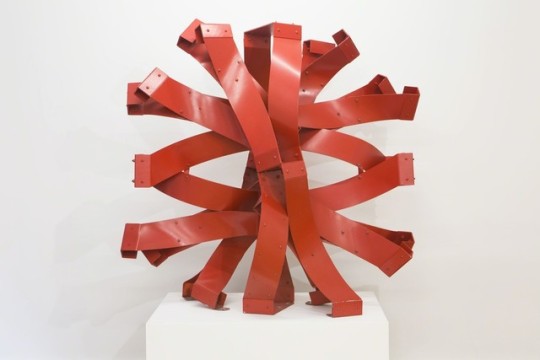
Edgar Negret
Sol, 1985. Enameled Aluminum, 57 × 60 × 37 in / 144.8 × 152.4 × 94 cm
47 notes
·
View notes
Text
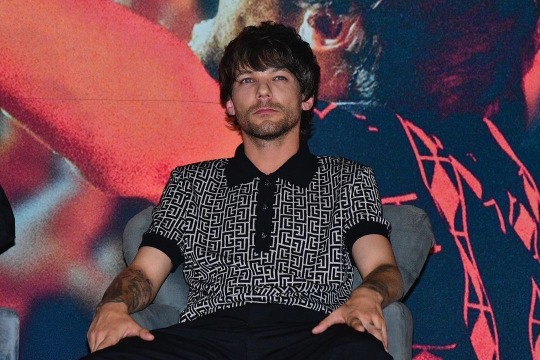



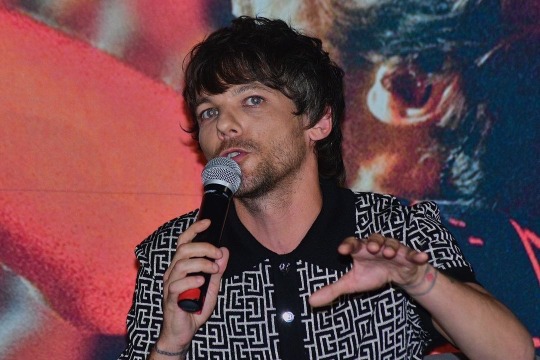
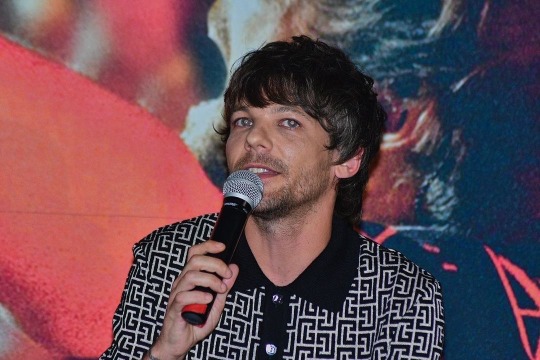


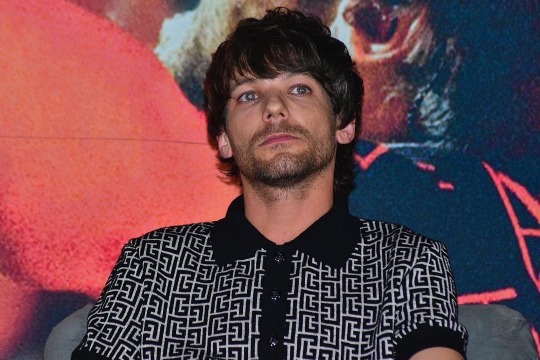
Mexico City 20.3.23
📸 Edgar Negrete Lira
33 notes
·
View notes
Photo
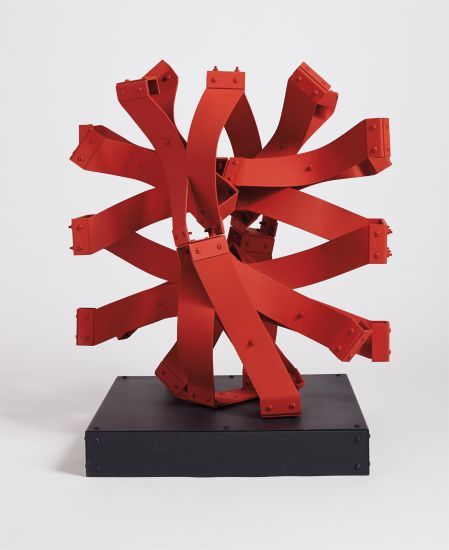
Sol , 1984
enameled aluminum
Edgar Negret
82 notes
·
View notes
Text
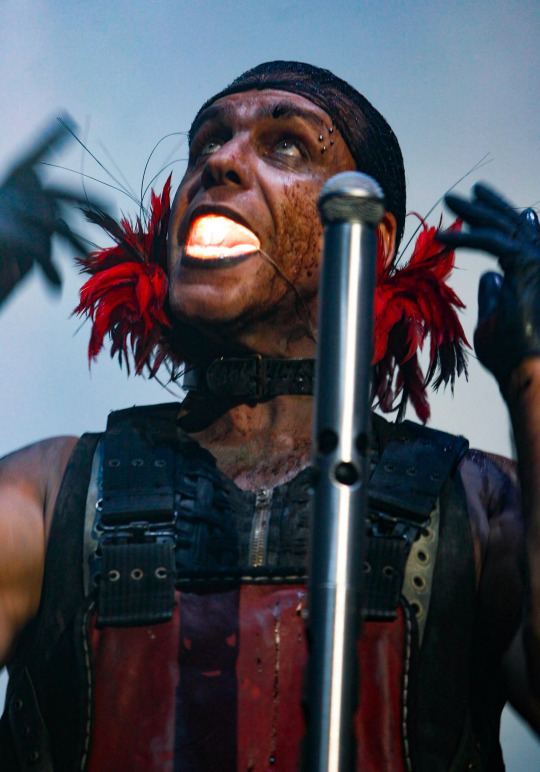
Till ❤️ (Mexico City, Mexico, 07-12-2010)
📸 credit to Edgar Negrete
32 notes
·
View notes
Text
“People Realized the Need to Make Connections Along the Whole Spectrum of Art History” - Leon Tovar on Latin American Art
by Kim Cabrera • April, 2021
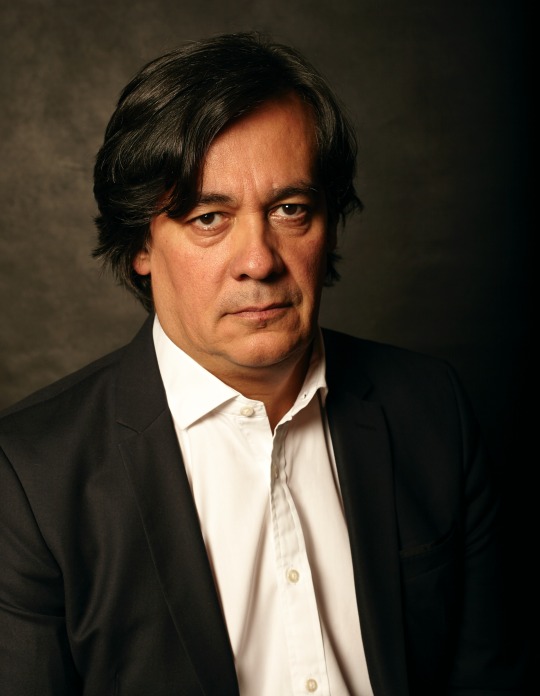
Leon Tovar, photo by Andres Serrano.
-------------------------------------------------------------------------------------------
Leon Tovar has been bringing important 20th-century Latin American art to an American and international audience for years – but that wasn’t always the program of Leon Tovar Gallery. When Leon opened his first space in Bogotá in 1991, he was focused on showing a roster of North American and European artists such as Sol LeWitt, Bernar Venet, and Josef Albers. It was only after moving to New York in 1998 that he realized there was a niche to fill: “I got the idea to make clear the real connections between Latin American artists and broader art history… I started to work here and present important programming featuring Latin American artists in different areas – geometric abstraction, optical, kinetic.”
Now the gallery, which is celebrating 30 years in business, is firmly focused on educating collectors about Latin American art and broadening the scope of the art historical canon.
We sat down to talk with Leon about the need to make cross-cultural connections throughout art history, the responsibilities of dealers and collectors, and the evolving role of digital tools in today’s art world.
When did you first become interested in visual art?
My experience with art started when I was around 7 years old. My father—who was a prominent lawyer in Colombia and a very intellectual person—used to paint over the weekends. And my mother, she always saved money to buy small pieces of art. From the beginning we had paintings on our walls and I was really passionate about that. When I started to paint at 8 years old, I was like a mini artist. And from that period I started to learn to be involved in the arts all my life. I never did anything else; that was my only career from the beginning.
When I was young there was an exhibition at the Museum of Modern Art of Bogotá, and it was one of my first exposures to geometric abstraction and optical art. A Venezuelan artist had been invited by the museum, probably Carlos Cruz-Diez, as he had a show there in 1985. After that, I became really passionate about how people can, with plasticity, communicate and express different ideas.
I went to Andes University to study art history, and when I was probably 18 or 19 years old I did an internship at a gallery in Stockholm. After that, when I was in my mid 20’s, I opened my first gallery in Bogotá in 1991 – as of this year we are 30 years old.
Early on, I was inspired after being invited by Sol LeWitt to his studio in Hartford. For my gallery in Bogotá, I started a program that brought international artists to the Colombian public, because it was difficult for people to go to museums in the States or Europe.

Leon Tovar at Sol LeWitt’s studio in Hartford, Connecticut, late 1980s.
-------------------------------------------------------------------------------------------
How did you meet Sol LeWitt originally?
My sister was also an art dealer, and she was married to a Swedish dealer. Together we started to make a plan for the gallery’s program. As I mentioned, very early on I was impressed with geometry, minimalism. We thought it was really important to bring LeWitt to Colombia.
He was really interested in doing something in Latin America because he had only been in one small show that had traveled to Bogotá, São Paulo, and Rio de Janeiro in 1975 – that was his only approach to Latin America. So, he invited us to his studio in Hartford. I was really impressed because he knew a lot about Latin American artists, especially those that we have worked with for many years, like Carlos Rojas, Eduardo Ramírez Villamizar, Edgar Negret. At that time, those Columbian artists were not even popular in Latin America or their own country.
The first show at the gallery ended up being Bernar Venet and Sol LeWitt.
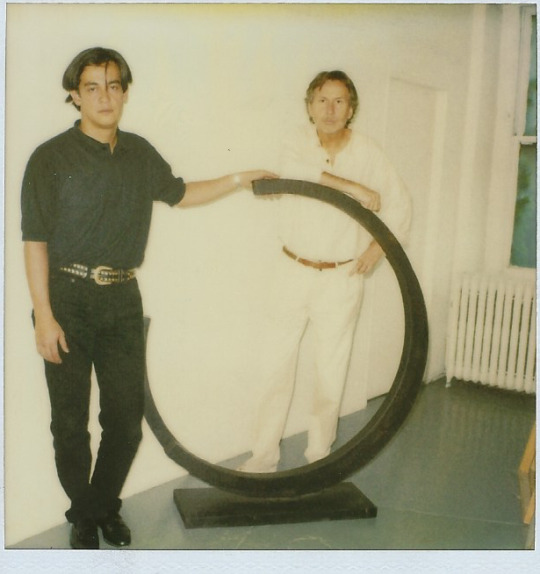
Leon Tovar with Bernar Venet at his studio, New York, 1992.
-------------------------------------------------------------------------------------------
Since those artists didn’t really have exposure in Colombia, did you find that people understood their work right away, or did you have to educate the public about them?
Their work divided people, immediately.
People who knew a lot about color theory, the theories of Josef Albers, understood. And later, we did an Albers exhibition in Bogotá, and people were thirsty to learn. Bogotá was a very well-known city for literature and art, and we have great artists there, but people didn’t have the same access to information. The budgets of museums were very limited.
A lot of people didn’t understand the work. If I sold a wall drawing by Sol LeWitt, and after the buyer received a certificate, and were told they needed to bring people to remake the wall drawing at their own place, they would ask, “Is this real?”
But the press was really good to us back then and we got a lot of articles all over Latin America. Venezuelan collectors started to buy from us. They sent curators to see our exhibitions and that’s why I survived this adventure. People thought it was a great idea to bring New York artists to Colombia and provide the public with access to their work. And on top of everything else, people could purchase the art if they liked it. We quickly became very popular in Latin America.
When you came to New York, did you find that these American artists you had shown in Colombia were already known and represented? Did you have an idea of representing them when you came to New York, or did you plan to bring Latin American artists to the States?
In 1998, I decided to move from Colombia to New York, both to gain another perspective for the gallery and because the situation had gotten so bad in Colombia that it didn’t make sense to continue in Bogotá. I moved to New York with the idea that the program would be more or less the same as it was in Colombia. But when I got here, Bernar was with André Emmerich Gallery, Sol was with Paula Cooper. I knew that now I was in the big swimming pool, and I got it immediately and I didn’t produce any resistance.
So I got the idea to make clear the real connections between Latin American artists and broader art history. Sol taught me there were no walls, no borders. He knew exactly who Carlos Rojas was, and the names of other Latin American artists that only professors knew. Then I understood there were no limits to the gallery’s program. I started to work here and present important programming featuring Latin American artists in different areas – geometric abstraction, optical, kinetic.

Leon Tovar Gallery, East 75th Street, New York. Photo by Peter Baker.
-------------------------------------------------------------------------------------------
Did you feel there was a lot of education you had to do with an American clientele, or do you think there was already an understanding here of Latin American art and its importance?
I had an advantage – I already knew how American artists worked, how European artists worked. I came here and learned a lot in the auction houses. I learned that we need to be very well-prepared with art historical knowledge in order to develop our program because most people have better ears than eyes. We need to explain to people how, why, optical art has been important. Why Yves Klein’s favorite artist was Jesús Rafael Soto. Why the Zero Group had connections with Latin American artists (one of the entrance pieces at the Guggenheim Museum for the Zero Group exhibition in 2014 was a Jesús Rafael Soto work). There are hundreds and hundreds of real connections, and this realization started from this chat with Sol LeWitt.
Museums started to become inspired, and in 2002, there was Body & Soul, one of the first important shows of art from Brazil at the Guggenheim Museum. It was probably among the earliest serious examinations of Latin American art.
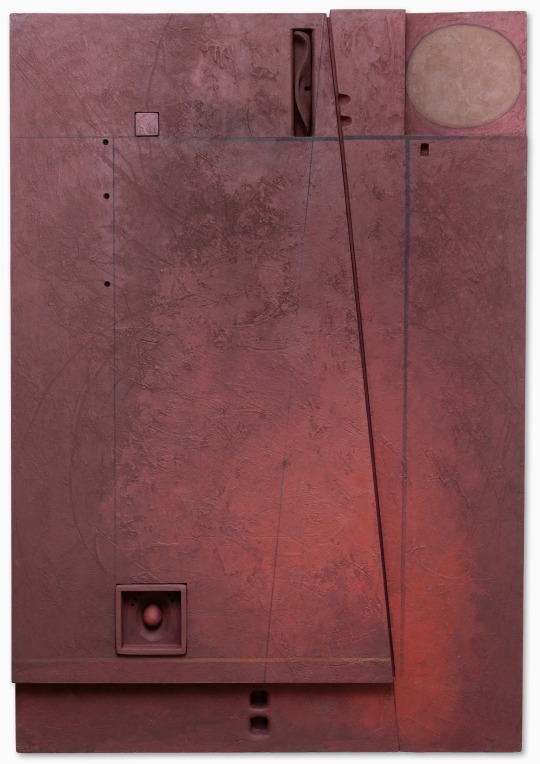
Marcelo Bonevardi, Rampart, 1969, acrylic and charcoal on textured substrate on wood, © Estate of Marcelo Bonevardi.
-------------------------------------------------------------------------------------------
Do you see yourself as filling in gaps in the art historical narrative?
If you’re a collector – a real collector – you need to find complements to your collection.
You can’t build a collection of Surrealists if you don’t include Frida Kahlo, Leonora Carrington, Wifredo Lam, Roberto Matta. You cannot talk about geometric abstraction without Carlos Rojas, Carmelo Arden Quin, Lucio Fontana. You cannot talk about Impressionism without Armando Reverón, Andrés de Santa Maria, because they were Impressionist artists also. If you are a landscape collector, you go to the School of Barbizon, but you also need to see the School of Quito. The light in Bogotá is the same light in Biarritz; the landscape artists have a connection over thousands of miles, even if they don’t know each other.
As a collector, you need to develop this expertise. If you don’t, it’s difficult. The gallery does a lot of work—we have a lot of space to cover, and thousands of collectors don’t have this knowledge of Latin American art. That’s why we started to be important, because people realized the need to make connections along the whole spectrum of art history.

Leon Tovar Gallery at ADAA’s The Art Show, New York, 2020. Photo by Nicolas Manassi.
-------------------------------------------------------------------------------------------
When you come to a new geographic region and you have to build a market for an established artist from elsewhere, you’re really building the market from the ground up. As the business owner, that is a long-term strategy and that doesn’t happen overnight – so here you are, starting a young gallery in the US, and you’re having to create a long-term view for it that may not have immediate financial benefits.
It’s a huge sacrifice. Huge. As difficult as it was to bring Sol LeWitt or Josef Albers to Bogotá in the late 1980s or early ’90s, it was just as difficult to bring artists like Carlos Rojas, or Eduardo Ramírez Villamizar, or Carmelo Arden Quin, or Sergio Camargo to America. And obviously New York is a very competitive city, but we love that type of competition.
Some of the artists we worked with in the beginning didn’t have any museum exhibitions or any really important approval from collectors. Over time we saw that change, and we saw their prices rise. We’re working with the most important of these big artists from Latin America. They are part of the art world, and there’s no room for speculation.
There are of course a lot of people that deal art for passion, knowledge, and education. And when people are really passionate, they never give up, even if they’re not economically successful. Obviously, the economic part is important, because you need to survive. But if you focus on one specific area and develop that knowledge, build the right program with the right artists, this will bring you success, sooner or later. It may take a long time, but don’t be stressed about the economic part because it will come; if you have a serious vocation, people will start to recognize that.

Leon Tovar with Jesús Rafael Soto and Carlos Cruz-Diez, Caracas, Venezuela, 1993.
-------------------------------------------------------------------------------------------
Is there any advice you may have for new collectors?
Like dealers, there are different kinds of collectors.
Some young collectors are interested in collecting because they saw it in their own families and they want to continue the tradition, which is fantastic and beautiful.
Another type of young collector sees a business opportunity. That’s important, too, for the market. But if you want to build a long-term project, and want the dealers and galleries to respect you and give you the best information, you need to act responsibly as a collector. You have privilege, yes, but also obligations to the galleries and to the art that you buy. There are protocols that you need to follow. It’s a big responsibility. It’s more than people think.
If you educate yourself, you will always be a successful collector. You need to learn a lot, read a lot, go to museums. You don’t need to be rich to start to collect. The Vogels are a beautiful example that you can be the best collector ever, just with knowledge. Start now, start as soon as possible. It’s important. If you buy a nice art piece, and you start to build your own collection, that will put you in a position to collect further. Start today.

Leon Tovar Gallery at Bogotá International Art Fair, 2016. Photo by Mateo Saenz.
-------------------------------------------------------------------------------------------
In this past year, a lot of the ways in which art dealers do business has changed. Can you talk about some of the changes you’ve seen, whether positive or negative?
I could spend two hours answering that question. I think today, the most important shift as a result of the current need for digital outreach is that galleries have started to be important again.
Important galleries – no matter their size – will survive, and prevail, because now collectors, more than before, need to have confidence in their dealers. They cannot go to art fairs, and they need to trust in the expertise of the gallery. If people want to buy Latin American art, they would prefer in this case to buy it from us, or from a serious dealer from Latin America, rather than to try to buy things online from someone they don’t know.
Digital tools give us an advantage but can also work against us. At the end of the day, you don’t always have control over the information that’s put out into the digital world. It’s a very risky moment right now in terms of information, and misinformation, too.
But in the pandemic, if you use these tools with level-headedness and with discretion, like we do at the gallery, it’s an advantage. They help a lot. You can do digital exhibitions. But at the end of the movie, galleries will be there forever. I think we are, in our case, using our platforms very responsibly. We don’t want to be aggressive with people because they are fatigued with digital platforms. You need to manage that.
I think you make a compelling and resonant point – while the digital platforms provide access, nothing can replace the value of humanity and personal relationships. And it is the relationships that will ultimately survive this process.
Exactly—it’s the sharing of knowledge. Knowledge is not Google. Dealers need to build experience, to spend the hours, spend your life, your money, your energy, probably your own private life. As a dealer you need to educate yourself, as much as an art historian. When you do this, you dignify the whole ecosystem, with collectors supporting galleries, galleries supporting artists, and artists supporting museums.
You can’t do everything online – that’s why museums postponed exhibitions. It doesn’t make sense to spend millions of dollars to do an online Francis Bacon retrospective. You need to bring people to the museum so they can see why Bacon is Bacon.
We will be back in person eventually, and will also continue making use of digital platforms. But we, at the gallery, will go back to our roots because a year ago we were so crazy and in such a rush. The fairs, the exhibitions, and also the preparation of these events – it’s a huge responsibility, a huge undertaking. Even though we are a small gallery we have a big operation.
Now we’re calmly developing our program. We’ve deaccelerated our process. We are going slower, but we are more precise and focused. You learn to be more selective with your time, and think seriously about what you want to do in the future. The collectors will come to you. If you have good work, they will come.

Leon Tovar greeting the King and Queen of Spain at ARCOmadrid, 2015.
-------------------------------------------------------------------------------------------
In the course of these conversations, themes develop organically. Responsiveness and shifting goals to meet your situation seems to be a theme for you.
It’s a combination of opportunity and resourcefulness – together, this makes you lucky.
We take opportunities. We’re competitive, we’re active, and we know what we’re doing.
100 years from now, 200 years from now, what do you hope will be the legacy of your gallery?
I’d like to think that a crazy, small gallery from Colombia started a project that eventually was developed for universities, for education, for the future. I think that Latin America, as a vast region, has suffered a lot. The artists from these countries make incredible efforts to manifest their own feelings and ideas, and are as important as any other artist in the world.
I think the most important thing is that people realize that knowledge is the key part of our program. We are here – humbly – to educate people about Latin America and the connections that exist between our artists and the rest of the world.
-------------------------------------------------------------------------------------------
All images courtesy Leon Tovar Gallery, New York.
2 notes
·
View notes
Text
- Hola.
- De dónde eres?
*Soy de Colombia.
- Aahh Pablo Escobar, marihuana, cocaína! ..
* Disculpe, usted es adicto, verdad?
- Yo, no!!... por qué?
* Porque si usted fuera culto, me habría preguntado sobre el mejor café del mundo, las mejores Esmeraldas, las flores más variadas y la biodiversidad, nuestras mujeres, las mujeres más bellas del mundo... y la más jovial y amigable La gente del planeta.
* Si fueras un atleta, me habría identificado con Falcao García, James Rodríguez, Nairo Quintana, Mariana Pajón o Catherine Ibargüen...
* Y si fueras un artista, me habría conectado con Fernando Botero, Doris Salcedo, Edgar Negret... o con cantantes como Juanes, Shakira, Carlos vives, o con totó la momposina, y con salsa, joropo, cumbia y Muchos.
* Si usted lee un poco, me habría identificado con nuestro premio Nobel de literatura Gabriel García Márquez.
* y si usted tuviera un buen paladar usted habría preguntado sobre el ajiaco, la bandeja paisa, el tamal, la arepa e ' huevo, la mote de ñame, las arepas, o la empanada nacional.
* Sin embargo, veo que sólo conoces al proveedor de tu adicción....
Sólo quiero mostrarle que somos más de 48 millones de colombianos honestos que incluso si no nos conocen, nos van a gustar mucho más e incluso quieren visitarnos.
--------
Una campaña contra el modo de describir a Colombia 🇨🇴 en todo el mundo.
💛💛💙❤️

15 notes
·
View notes
Text

Nombre de los integrantes: Felipe Londoño Benjumea
Materia: Proyecto 2
Negret es un dúo de mesas auxiliares apilables diseñado para un espacio de microliving. Consiste en una mesa auxiliar principal, la cual abraza a una mesa auxiliar secundaria al momento de guardarse. Fue nombrada así en honor al escultor colombiano Edgar Negret, conocido por sus esculturas fabricadas en láminas de aluminio atornilladas, fuente de inspiración para este proyecto. Las patas ordenadas en secuencia con sus ensambles traslapados metálicos permiten que solo se necesiten cuatro tornillos para ensamblar cada mesa, y estas pueden ser armadas y desarmadas en poco tiempo de ser necesario. A su vez, esto permite alternar los colores de las patas, ya que reemplazar una pata por otra es bastante fácil y divertido, sobre todo si se aprovecha el juego de planos que se forma al estar apiladas. Además, se puede incluir un revistero metálico en la mesa secundaria, el cual se ensambla con dos tornillos.
Danos tu opinión sobre este proyecto aquí
youtube

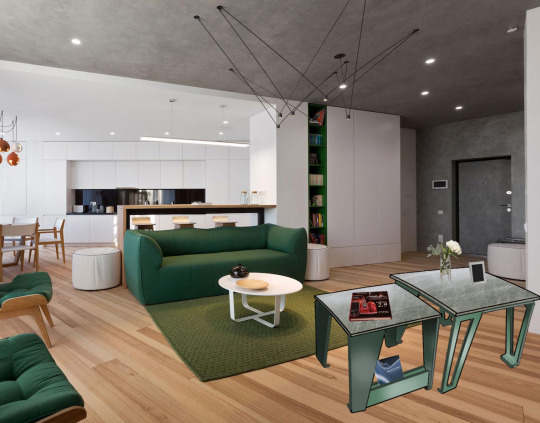

¿Quieres conocer más del proyecto?
Envía un correo a [email protected]
Volver al índice de proyectos
1 note
·
View note